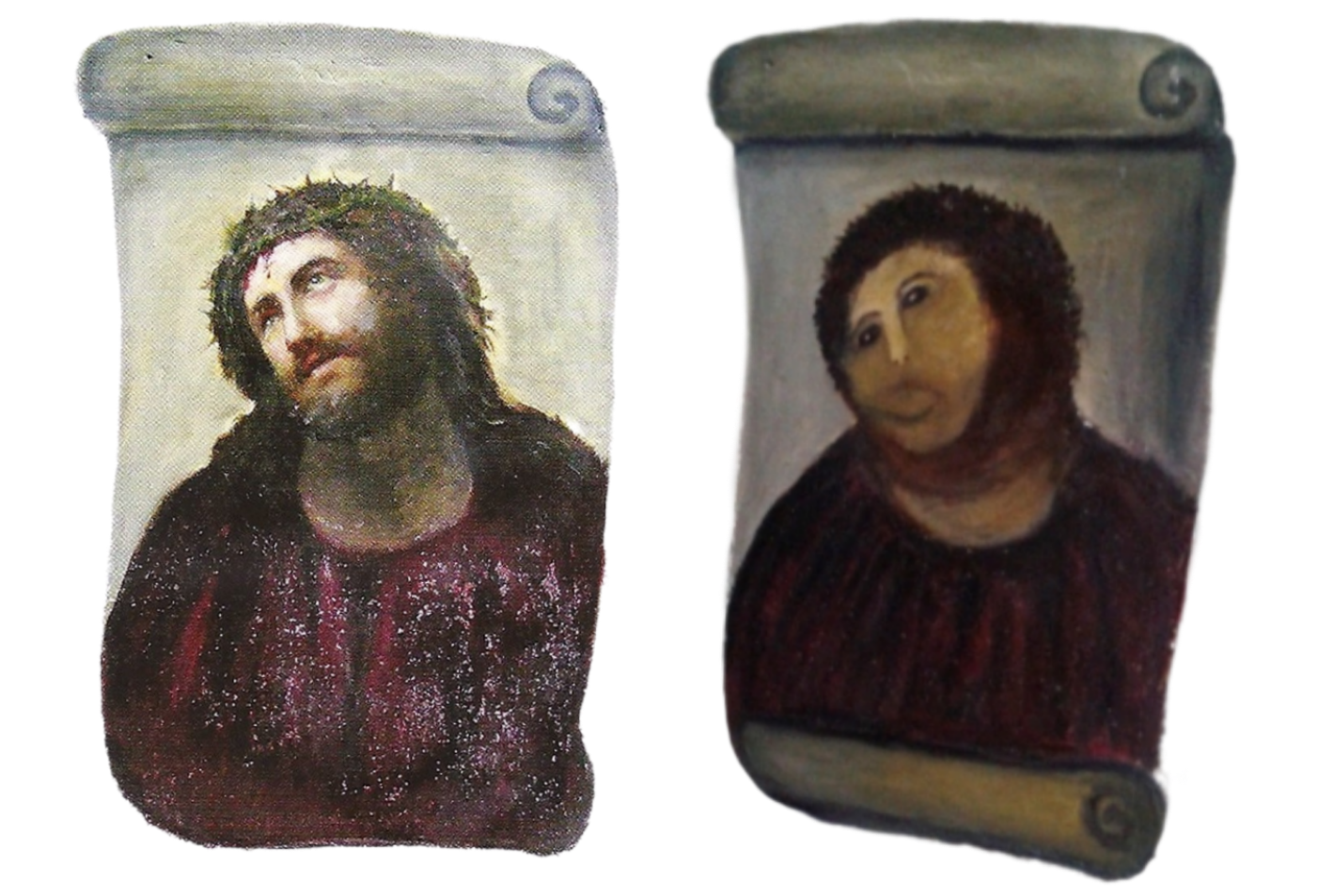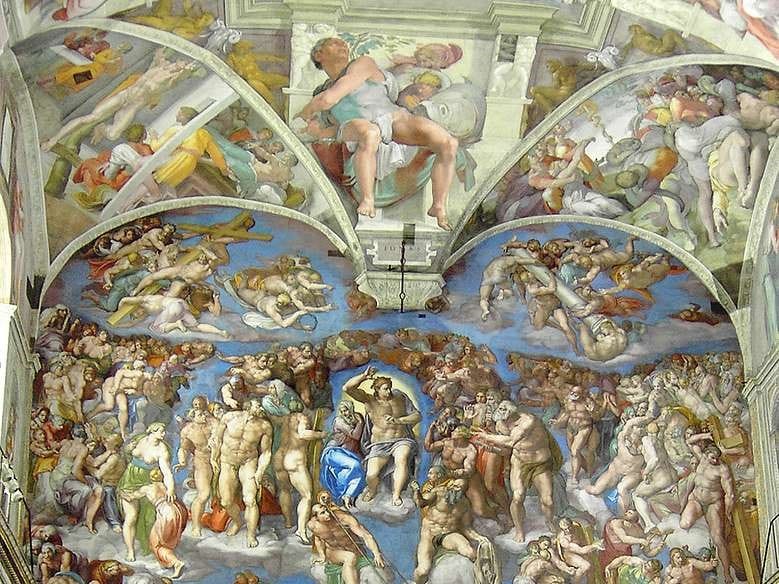Art Restoration: Techniques and Controversies Shaping a Specialized Field
Explore the evolving field of art restoration, from the ethical dilemmas of over-restoration to the role of advanced technologies like 3D modeling and nanotechnology.

Art restoration is a delicate process that brings together science, history, and aesthetics, preserving priceless works of art for future generations. But restoration efforts often face controversy, particularly when technical precision clashes with cultural and historical integrity. The field is constantly evolving, and with the rise of new technologies, new ethical questions emerge about what it means to truly restore a piece of art. One of the central challenges for restorers is how far to go in preserving the artwork without compromising the essence of the piece itself.
The Art of Restoration: Balancing Preservation and Authenticity
Restoration is an intricate process, where the primary goal is to preserve an artwork while maintaining its original intent. However, the challenge for restorers often lies in how far to go without compromising the essence of the piece itself. It is not just about making the artwork look as it did when it was first created, but about respecting the wear and history the work has accumulated over time.
Take, for instance, the act of cleaning a painting. While cleaning can remove centuries of grime, soot, or aged varnish, the process can also strip away important details if done improperly. Over-cleaning may lead to the loss of subtleties in the artist’s original brushwork or color balance, essentially erasing parts of the painting’s history.
Similarly, structural repairs such as reinforcing a canvas or mending tears might seem straightforward, but these repairs raise concerns about authenticity. Using modern materials or techniques can change the physical makeup of the work, distancing it from the original.
The real question, then, becomes: At what point does restoration stop being about preservation and start becoming over-restoration? This dilemma underpins many of the field’s most heated controversies.
The Controversies: Restorations Gone Wrong
Art restoration, while often necessary, can sometimes lead to disastrous outcomes that spark global debates over the integrity and professionalism of the process. From unqualified individuals attempting to "fix" delicate works, to high-profile restorations that alter masterpieces, these controversial moments bring into question the ethics of preserving versus altering original art.
Restoration is an intricate and subjective process, and even when undertaken by skilled professionals, it is not without risk. Each decision made—whether it’s a gentle cleaning or the replacement of missing elements—carries the weight of interpreting the artist’s intent and maintaining the historical integrity of the work. However, when restoration goes wrong, the results can be catastrophic, sometimes even rendering the original piece unrecognizable. Two prime examples of this are the Ecce Homo fresco in Spain, which became an international sensation for its amateurish transformation, and the contentious cleaning of Michelangelo’s Sistine Chapel, which reignited debate over whether "restoration" can sometimes mean the loss of an artwork's authenticity.
One of the most notorious examples of restoration failure is the Ecce Homo fresco, often dubbed the "Monkey Christ." In 2012, Cecilia Giménez, an elderly parishioner, attempted to restore a deteriorating fresco of Christ in a small church in Spain. What was intended as a modest touch-up resulted in the complete transformation of the work, turning it into an unrecognizable, almost cartoonish version of its former self.
This incident sparked not only global media coverage but also discussions about the professionalism and qualifications needed in art restoration. Although the outcome was laughable to some, it underscored the risks involved when restoration falls into untrained hands. Despite the botched restoration, the fresco became a tourist attraction, drawing attention to the delicate nature of art preservation and the public’s fascination with restoration disasters.

The Sistine Chapel ceiling underwent a controversial restoration in the 1980s and 1990s. Centuries of soot and grime had dulled the vibrant colors of Michelangelo's masterpiece, and restorers were tasked with removing the grime to reveal the original hues. While the restoration unveiled brighter colors, some art historians argue that the cleaning removed crucial shadowing and detail, effectively altering Michelangelo’s vision.
This raised a key ethical dilemma: Should the goal of restoration be to make the artwork look as it did when originally created, or should it respect the wear and tear that time has inflicted on the piece? Some experts argue that restoration can distort the original intent, risking the loss of the artist’s final touches.
As one restorer pointed out, "Every act of cleaning or repair is an interpretation. It’s a delicate balancing act between making the artwork accessible and respecting its history."

How Technology is Changing the Art Restoration Process
The field of art restoration has been transformed by technological advancements, allowing conservators to approach projects with unprecedented precision and care. As modern tools become more accessible, the practice of restoration has shifted from manual, often risky interventions to more science-driven methods that minimize damage and maximize understanding of the artwork.
One of the most significant innovations in recent years is the use of non-invasive imaging techniques. Tools such as infrared reflectography and X-ray fluorescence (XRF) enable restorers to look beneath the surface of a painting without the need for physical interference. These technologies have uncovered underdrawings, hidden layers of paint, and even traces of previous restoration efforts, offering a window into the artist’s process. By understanding how a painting was created, restorers can make more informed decisions about how to proceed, ensuring that the integrity of the original work is maintained.
For instance, infrared reflectography has been instrumental in revealing hidden details in Renaissance masterpieces, shedding light on the artists’ techniques and decisions, which are often invisible to the naked eye. This allows restorers to approach the artwork with greater sensitivity, reducing the risks of over-cleaning or misinterpretation. As one restorer notes, "These tools give us a deeper insight into the layers of history embedded in the work, allowing us to respect both the original vision and the passage of time."
Beyond imaging, 3D modeling has revolutionized the restoration of sculptures and other three-dimensional works. This technology enables restorers to recreate missing or damaged parts with stunning accuracy, ensuring that the restored piece aligns with the original both structurally and aesthetically. Meanwhile, nanotechnology is offering new ways to clean and preserve delicate surfaces, with nanoparticles engineered to remove grime or varnish without affecting the underlying material. These cutting-edge tools reflect a growing trend in restoration: balancing the desire to restore the artwork’s original beauty with a respect for the natural aging process that gives a piece its historical significance.
As technology continues to evolve, it raises new questions about the limits and ethics of restoration. How far should conservators go in altering or enhancing a piece? Is there a risk that modern interventions could erase the very elements that make an artwork authentic? These are challenges that the restoration community will continue to grapple with as it navigates the delicate intersection of art and science.
3D Modeling and Nanotechnology: The Future of Sculptural Restoration
In recent years, the world of art restoration—particularly in sculpture—has experienced a revolution with the advent of 3D modeling and scanning technologies. These tools enable restorers to create highly detailed scans of fragile sculptures, capturing their dimensions and intricate details with remarkable accuracy. Once these digital models are produced, they can be used to 3D print missing or damaged parts, which can then be seamlessly integrated into the original work. This process allows for a less invasive and more precise restoration than traditional methods, where manual reconstruction often ran the risk of altering the piece’s integrity.
For example, when a part of a sculpture is lost or severely damaged, the ability to digitally replicate the missing portion—using 3D scans—ensures that any restoration aligns perfectly with the original contours and features of the artwork. This technology has been particularly useful in the restoration of classical sculptures and architectural elements, where accuracy is crucial. Restorers can now repair ancient statues, architectural columns, or ornate decorations without introducing new materials that might look out of place or clash with the original craftsmanship.
At the same time, nanotechnology has taken art conservation to another level, especially in the cleaning of delicate surfaces. Nanoparticles, designed to be smaller than the paint or dirt particles on an artwork, can be precisely calibrated to target and remove layers of dirt, varnish, or pollutants without disturbing the underlying paint. This fine-tuned approach allows restorers to clean without damaging even the most fragile surfaces.
As one restorer aptly put it, "Nanotechnology allows us to clean and repair delicate surfaces with a level of control we never thought possible before." This method represents a major leap in how conservators approach the restoration of priceless works, offering a combination of precision and safety that was previously unattainable.
Both 3D modeling and nanotechnology represent an exciting future for art restoration, allowing conservators to address damage with unprecedented care and accuracy. However, they also raise the question: At what point does restoration risk becoming reproduction? As technology advances, the boundaries between preserving an original piece and recreating elements of it may continue to blur, creating ethical dilemmas about how much intervention is too much.
Broader Ethical Concerns in the Digital Age
As technology advances, the field of art restoration is experiencing a profound transformation, but with this progress comes a set of broader ethical concerns that challenge the integrity and authenticity of restored works. How much technology is too much? This question underpins the debate as to whether the introduction of sophisticated tools such as 3D printing, AI-driven color matching, and nanotechnology may push restorers to alter rather than preserve the original artwork.
One of the major concerns is that technology could lead to the over-restoration of artworks, removing the historical patina and the wear that gives a piece its unique character. The patina, a natural aging process visible in many historical pieces, is often seen as a testament to the passage of time, and its removal could rob the artwork of its historical context. Some argue that over-cleaning or technologically "perfecting" a piece risks erasing these crucial signs of age and authenticity, creating a modernized version of the original work that no longer represents its true historical value.
Another issue is the replication dilemma. With 3D modeling and printing, missing or damaged parts of sculptures and artworks can now be accurately replicated and seamlessly integrated into the original piece. While this might seem like an advantage, it raises the question: At what point does restoration cross the line into reproduction? If a restored piece is no longer composed of its original materials but rather technologically reproduced elements, can it still be considered an authentic historical object?
Furthermore, the introduction of AI and digital techniques in restoration challenges the traditional, hands-on craftsmanship that has defined the field for centuries. Restorers have long relied on their expert knowledge and manual skill, often interpreting the artist's original vision. Technology introduces a degree of automation that, while precise, may detach the human element from the restoration process. Some experts argue that while technology offers precision, it lacks the emotional and intellectual depth required to make delicate restoration decisions. As one restorer put it, "Technology is a powerful tool, but it should serve as an aid, not a replacement for the delicate hand of a human restorer."
Financial motivations also pose ethical concerns. The pressure from museums or galleries to restore works quickly for exhibitions or tourism can lead to more aggressive restoration methods, prioritizing aesthetics and commercial appeal over historical accuracy. Some worry that this could lead to restorations that prioritize the visual impact for modern viewers while compromising the work’s authenticity. This trend raises the question: Are we preserving history, or are we reshaping it for contemporary consumption?
As these technologies continue to advance, they present both opportunities and risks. The restoration community must navigate these ethical dilemmas carefully, balancing the desire to preserve artworks for future generations with the need to respect their historical and cultural integrity.
A Field Shaped by Innovation and Controversy
As the field of art restoration continues to evolve, the introduction of advanced technologies such as 3D modeling, nanotechnology, and AI-driven tools is offering restorers unprecedented opportunities to preserve and rejuvenate priceless works of art. These innovations promise greater precision and the potential to save pieces that might otherwise have been lost to time. However, with these advancements come deeper questions about the limits of restoration and the integrity of the pieces being restored.
At its core, art restoration is about more than just making an artwork visually appealing. It is about preserving history—its beauty, its wear, and even its imperfections. Each restoration project must grapple with the delicate balance between preservation and alteration, respecting the artist’s original intent while ensuring the work survives for future generations to experience and interpret. Technology, while a powerful tool, introduces new challenges: How much restoration is too much? And when does a restored piece stop being authentic and become a modern interpretation?
The ethical concerns surrounding restoration will likely intensify as technological advancements continue to push the boundaries of what is possible. Museums, galleries, and conservators will need to ask: Are we preserving history, or are we rewriting it to fit the expectations of modern audiences? As art restoration becomes more precise, the risk of over-restoring pieces could mean that we lose the very history and authenticity that make these works so valuable in the first place.
Ultimately, the future of art restoration lies in finding the right balance. Conservators will need to embrace technology’s benefits while staying vigilant about maintaining the authenticity and historical integrity of the works they are entrusted to preserve. In doing so, they ensure that future generations can appreciate art not only for its beauty but also for the complex history that lives within it. The challenge remains: Are we protecting art’s legacy or reshaping it in the image of modern ideals?
ART Walkway News





